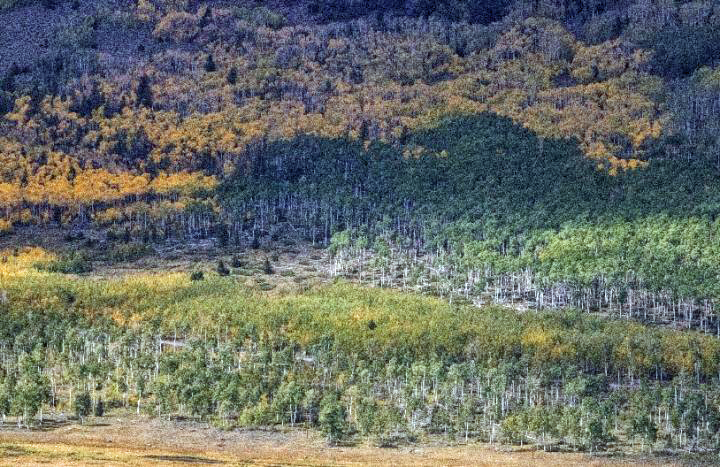Researchers in Utah say what many consider to be the world’s largest living organism is dying but could be saved with what they call a ‘mega-conservation’ effort.
The Pando aspen clone looks like a forest of trees, but since each of the trees is linked by common genetic markers and possibly one giant root system, scientists consider it to be a single living organism.

A seventy-two-year aerial photo chronosequence showing forest cover change within the Pando aspen clone, Utah, USA. Photos were georectified using ArcMap® software to ensure accurate scale and location alignment. Yellow polygon depicts the boundary of the 43 ha clone as projected over each photo year. (Base images courtesy of USDA Aerial Photography Field Office, Salt Lake City, Utah)
Also called the Trembling Giant and the One Tree Forest, the researchers say Pando has been around for thousands of years, covers about 43 hectares and weighs about 5.9 million kilograms.
Paul Rogers and Darren McAvoy from Utah State University say they have performed the first complete assessment of the Pando aspen, which is located in Utah’s Fishlake National Forest.
They found that much of the Pando colony is failing, although a previously restored section of the clone trees continues to recover.
The two researchers outline their work and findings in a study recently published by the journal, PLOS ONE.
The study suggests the thinning of the aspen clones is due to human development and damage caused by local wildlife such as the mule deer.






















Comments are closed.